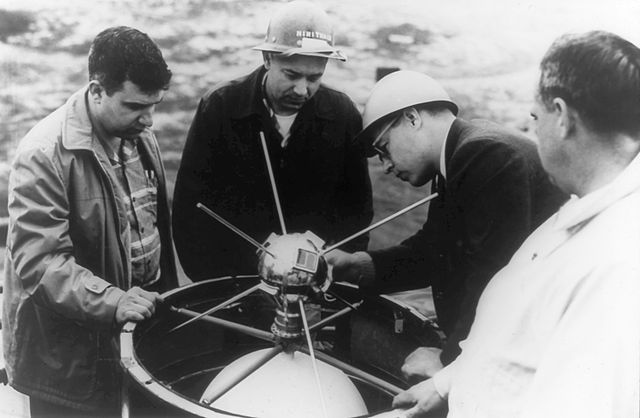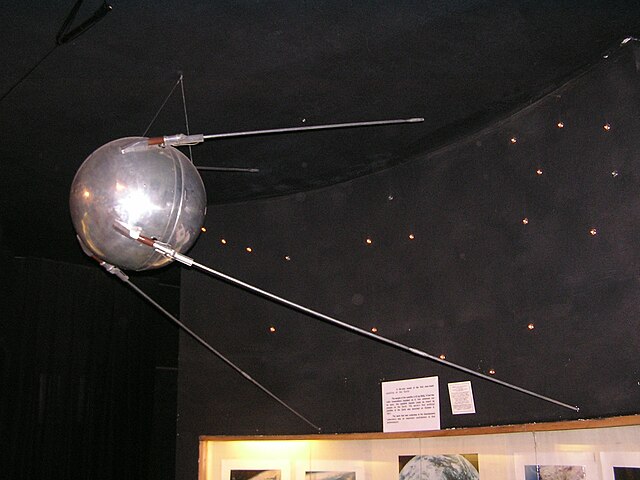Vanguard TV-3, was the first attempt of the United States to launch a satellite into orbit around the Earth, after the successful Soviet launches of Sputnik 1 and Sputnik 2. Vanguard TV-3 was a small satellite designed to test the launch capabilities of the three-stage Vanguard and study the effects of the environment on a satellite and its systems in Earth orbit. It was also to be used to obtain geodetic measurements through orbit analysis. Solar cells on Vanguard TV-3 were manufactured by Bell Laboratories.
The Vanguard rocket explodes on launch
The NRL engineers place Vanguard 1 atop the third stage of the launching vehicle. Shown here (from left to right, Roger L. Easton, Sandy J. Smith, Robert C. Bauman, and Joseph B. Schwartz. (Bauman and Schwartz transferred with the Vanguard Project to NASA). On 17 March 1958, Vanguard 1 started its historic journey into space (U.S. Navy photo).
The Vanguard 1A satellite on display at the National Air and Space Museum, 2009.
Sputnik 1 was the first artificial Earth satellite. It was launched into an elliptical low Earth orbit by the Soviet Union on 4 October 1957 as part of the Soviet space program. It sent a radio signal back to Earth for three weeks before its three silver-zinc batteries became depleted. Aerodynamic drag caused it to fall back into the atmosphere on 4 January 1958. The world's first observation was made at the school observatory in Rodewisch (Saxony).
Replica of Sputnik 1 in the Museum of Space and Missile Technology (Saint Petersburg)
Last remaining piece of Sputnik 1: metal arming key which prevented contact between batteries and transmitter prior to launch; on display at the Smithsonian National Air and Space Museum
30 kopek USSR stamp depicting Sputnik 1 orbiting the Earth, the Earth orbiting the Sun and the Sun orbiting the centre of the Milky Way galaxy
First ground track of Sputnik 1 on 13 October 1957 4:51 from Rodewisch







